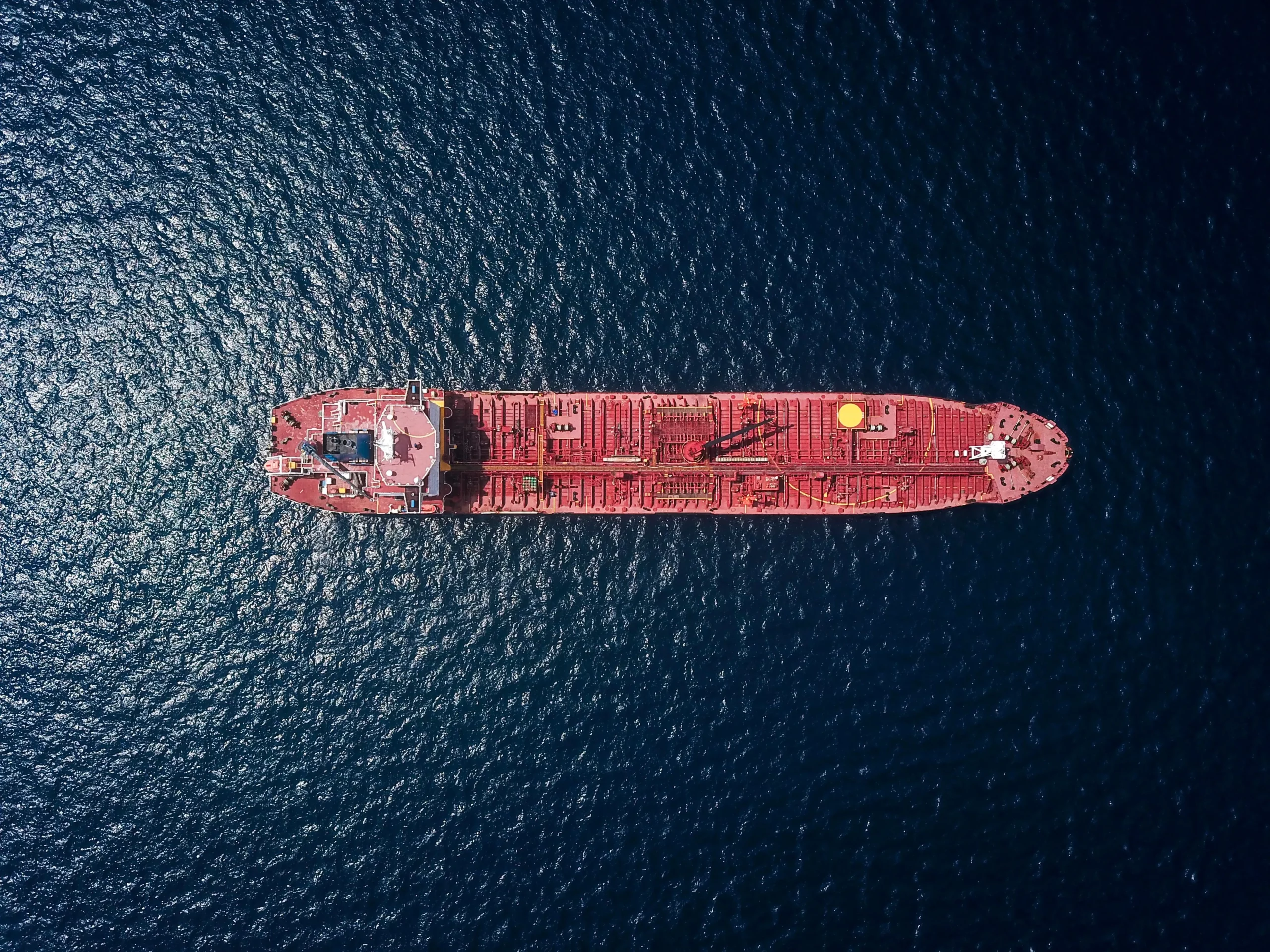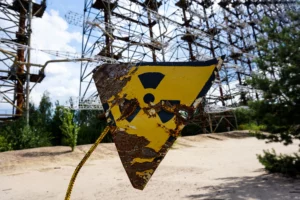
China’s Quest for Food Security: Balancing Import Dependency and Domestic Production
Unveiling China’s Food Security Challenges and Strategies: Import Dependency vs. Domestic Production.

Deep sea mining has emerged as a frontier in the quest for essential minerals critical to modern technology. This practice involves extracting minerals from the ocean floor, including coveted resources like copper, cobalt, and nickel, vital for renewable energy technologies and electronic devices. With terrestrial mineral sources depleting rapidly, the allure of the ocean’s hidden wealth grows stronger by the day.
Deep beneath the waves, the ocean floor harbors potato-sized polymetallic nodules and polymetallic sulfides rich in metals. These resources are not only abundant but also hold the key to powering a low-carbon future. They are essential for manufacturing electric vehicle (EV) batteries, wind turbines, and solar panels—technologies at the forefront of the fight against climate change.
For a deeper dive into the significance of these minerals, World Resources Institute offers comprehensive insights.
The technology enabling the extraction of deep-sea minerals is both advanced and diverse, including Autonomous Underwater Vehicles (AUVs), Remote Operated Vehicles (ROVs), and hydraulic pumps. These sophisticated machines navigate the extreme pressures and darkness of the deep sea to locate and extract precious minerals.
Autonomous Underwater Vehicles (AUVs): These small, remotely operated vehicles are instrumental in surveying the ocean floor, mapping potential mineral deposits with precision.
Remote Operated Vehicles (ROVs): Larger and more powerful, ROVs collect ore samples, which are then analyzed to confirm their value.
Hydraulic Pumps and Bucket Systems: Once a site is deemed profitable, these systems bring the mineral deposits to the surface for processing.
The challenges of deep-sea mining are manifold, including the abrasive nature of the seabed material and the technological hurdles of operating in such a remote and hostile environment. Yet, the potential rewards fuel ongoing innovation and investment in this sector.
For further information on the mechanics of deep-sea mining, Eddy Pump provides an enlightening overview.
The race to exploit the ocean’s mineral riches is not just a technological challenge but a geopolitical puzzle. As nations and corporations vie for control over these resources, the International Seabed Authority (ISA) plays a crucial role in mediating these ambitions within international waters.
The geopolitical implications of deep-sea mining extend far beyond the extraction sites. Nations are increasingly recognizing the strategic importance of seabed minerals in securing their technological and energy futures. This has led to a surge in exploration contracts, with countries and companies positioning themselves to capitalize on this untapped resource.
For an in-depth analysis of the geopolitical tensions surrounding the ecological challenges , visit Geopolitics Journal’s environment section.
This exploration of deep-sea mining’s technological and geopolitical landscapes sets the stage for a broader discussion on the environmental and regulatory challenges that lie ahead. As we delve deeper into the implications of extracting the ocean’s mineral wealth, it’s clear that the future of deep-sea mining is as much about navigating these complex waters as it is about the technological feats that make it possible.
Deep sea mining, a concept that has tantalized industries and environmentalists alike, stands at the precipice of reality and controversy. But what exactly is it? At its core, it involves extracting mineral resources from the ocean floor, including metals like copper, cobalt, nickel, and rare earth elements crucial for modern technologies such as electric vehicles, wind turbines, and solar panels. These resources lie at depths ranging from 200 meters to 6,500 meters, in forms like polymetallic nodules, polymetallic sulfides, and cobalt-rich ferromanganese crusts.
The allure of deep sea mining is undeniable. It promises to meet the world’s escalating demand for critical minerals, which are rapidly depleting on land. Yet, as we stand in 2024, the question looms: Is deep sea mining the panacea for our resource needs or a Pandora’s box of environmental catastrophes?
For further insights into deep sea mining, its potential, and challenges, visit World Resources Institute.
The technological leap required to mine the seabed’s depths is nothing short of extraordinary. Deep sea mining equipment spans a wide array, from Autonomous Underwater Vehicles (AUVs) for surveying to Remote Operated Vehicles (ROVs) for sampling and extracting ores. These are complemented by hydraulic pumps or bucket systems that bring the mineral deposits to the surface.
How does this machinery work in the harsh, unforgiving environment of the deep sea? It starts with AUVs mapping the ocean floor to locate mineral deposits. Then, ROVs, equipped with high-powered dredge pumps, go to the identified sites to mine the ocean floor. This operation is complex, requiring sophisticated technology and significant investment. The process not only showcases human ingenuity but also raises questions about the environmental impact of disturbing the deep-sea’s pristine conditions.
Autonomous Underwater Vehicles (AUVs): For mapping and surveying.
Remote Operated Vehicles (ROVs): For ore sampling and extraction.
Hydraulic Pumps/Bucket Systems: To bring minerals to the surface.
This advanced machinery underscores the potential of deep sea mining to revolutionize resource extraction. Yet, the abrasive nature of the material and the turbulence created during extraction pose significant challenges, highlighting the need for ongoing technological innovation.
The quest for deep sea minerals is not just a technological endeavor but a geopolitical one. The seabed’s riches have become the latest frontier in international competition, with nations vying for a slice of the ocean’s wealth. The International Seabed Authority (ISA), tasked with overseeing deep sea mining activities in international waters, finds itself at the center of a complex web of geopolitical interests.
Countries and companies are racing to secure contracts and explore the depths, with the ISA approving exploration contracts for various mineral deposits. However, the geopolitical implications are profound. Deep sea mining has the potential to shift global power dynamics, depending on who holds the keys to these underwater treasures.
For a deeper dive into the geopolitical intricacies of deep sea mining, visit Geopolitics Journal’s coverage on the environment.
This exploration lays the foundation for a broader discussion on its viability, environmental impacts, and geopolitical ramifications. As we delve deeper in the next generations of this article, the complexities and controversies surrounding deep sea mining will become increasingly apparent, challenging us to consider whether it truly is the future of resource extraction.
The conversation around deep sea mining cannot proceed without addressing the elephant in the room: environmental impact. The deep ocean is a frontier as alien and unexplored as the surface of Mars, hosting ecosystems that we have only begun to understand. The potential environmental impacts are a subject of intense debate and concern.
Habitat Destruction: The extraction of minerals involves disturbing the ocean floor, which can lead to irreversible damage to unique deep-sea habitats.
Sediment Plumes: Mining operations can create plumes of sediment, which can spread far from the mining site, smothering marine life and disrupting ecosystems.
Biodiversity Loss: The deep sea is home to a vast array of life, much of which is still undiscovered. Mining could lead to the extinction of species before we even know they exist.
Despite these concerns, proponents argue that with proper regulation and technological advances, it’s possible to minimize the environmental footprint of deep sea mining. This delicate balance between economic development and environmental preservation is at the heart of the debate on deep sea mining’s future.
For more on the environmental implications of deep sea mining, explore Greenpeace’s insights.
As we look toward the future, the trajectory of deep sea mining seems to hang in a precarious balance. On one hand, the demand for minerals necessary for green technologies continues to surge. On the other, the environmental and geopolitical challenges present significant hurdles.
The potential to access a virtually untapped wealth of minerals.
The need to develop sustainable and environmentally friendly mining techniques.
The importance of international cooperation and regulation to manage the exploitation of deep sea resources equitably.
Whether the economic benefits of deep sea mining outweigh the environmental risks.
The adequacy of existing regulations and the need for a global moratorium on deep sea mining until more is known about its impacts.
Countries: Leading the charge with strategic interests in deep sea mining.
Companies: Innovating in technology and exploration to unlock the ocean’s riches.
Environmental Groups: Advocating for caution and sustainability.
| Stakeholder Type | Role | Concerns |
| Countries | Regulation, Exploration | Economic benefits, Geopolitical power |
| Companies | Technology, Extraction | Profit, Technological challenges |
| Environmental Groups | Advocacy | Environmental preservation, Sustainable practices |
This discussion is more than just about mining; it’s about how humanity chooses to interact with the planet’s last unexplored frontiers. The decisions made today will resonate through generations, affecting not just the economies of nations but the very health of our planet.
For insights into water-related challenges, another pressing issue of our time, visit Geopolitics Journal’s coverage on the water crisis.
The geopolitics of deep sea mining are as turbulent as the ocean currents themselves. Nations across the globe are keenly aware of the strategic importance of the minerals lying on the ocean floor. As we move through 2024, it’s clear that it has become a significant point of international tension and negotiation.
Countries are not just racing to stake their claims in the mineral-rich areas of the deep sea; they are also grappling with how to regulate this new frontier. The International Seabed Authority (ISA) plays a central role in this drama, tasked with creating a framework that balances economic interests with environmental protection and equitable access.
Strategic Mineral Resources: The competition for access to critical minerals for technology and defense.
Regulatory Frameworks: The development of international laws and guidelines to govern deep sea mining activities.
Collaboration vs. Competition: The potential for cooperative international efforts to ensure sustainable and responsible mining practices.
The stakes are high, and the outcomes of these geopolitical negotiations will have long-lasting impacts on global relations, environmental stewardship, and the future of resource extraction.
For a closer look at the geopolitical implications of resource extraction, check out Geopolitics Journal’s crisis topics.
As we peer into the depths of the ocean and the future of resource extraction, the path forward for deep sea mining is anything but clear. The promise of abundant mineral resources has been met with enthusiasm by industries and certain governments, eager to fuel the green transition and secure strategic advantages. However, the environmental risks, technological challenges, and geopolitical tensions present formidable obstacles.
The demand for minerals essential for renewable energy technologies and electronics is undeniable.
Yet, the responsibility to protect the deep sea’s fragile ecosystems cannot be overstated.
Technological innovations and rigorous environmental assessments will be crucial in mitigating the impacts of deep sea mining.
International collaboration and transparent regulatory frameworks are essential to manage the geopolitical complexities and ensure equitable benefits.
Deep sea mining stands at a crossroads, embodying the tension between human progress and environmental stewardship. The decisions made in the coming years will not only determine the viability but also reflect our collective values and priorities as a global community. In 2024, we are tasked with navigating these uncharted waters carefully, mindful of the delicate balance between exploiting and preserving the planet’s final frontier.

Unveiling China’s Food Security Challenges and Strategies: Import Dependency vs. Domestic Production.

Revolutionizing Flight: DARPA’s AI Takes the Reins of Actual F-16s in a Major Breakthrough.

Unraveling Geopolitical Chaos: The Dam Destruction and Ukraine’s Counter-Offensive in the Face of Nuclear Armageddon.

Dive into the heart of the global water crisis—where climate change meets geopolitical strife. Discover cutting-edge solutions and international efforts aimed at securing water for all.